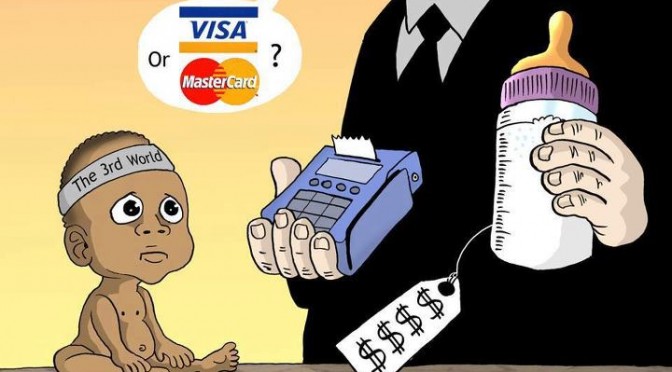
At present, one in four of the world’s countries are in a debt crisis or near to it. These 50 countries total 436 million people. As clear from recent developments in Europe, one country’s debt crisis affects its neighbours, other countries in the region, and directly or indirectly the rest of the world. In this way, the continents of Africa and Latin America are particularly hard hit by the debt crisis, which continues to affect the entire world as well.
Under exploitative capitalism, massive debt does not equal debt crisis. The Economist's debt clock displays a running account of accumulating national debt all over the world. It indicates that the greatest debtor nations are not those who are in or near debt crisis. Rather, most of the countries in the debt crisis zone are poor and have relatively little debt compared to rich countries.
Hence, under exploitative capitalism huge debt = wealth and power.
Debt crisis is a vicious circle that needs to be stopped and set right. PROUT suggests the following remedies for ending the debt crisis:
• A system of basic protection of local economies should consist of both prioritising local produce and prohibiting exports of local raw materials.
• Further on, a system of cooperative free trade should be evolved to remove import- and export duties on consumable commodities, but only once basic self-sufficiency is attained – i.e. countries that are basically self-sufficient may engage in such free trading. This means that overproduction in one place can be consumed by other countries.
• Barter (exchange of goods) and not purchases by money transactions should be the preferred basis of trade among those basically self-sufficient countries.
As is evident from the above, PROUT is only possible in the absence of exploitative capitalism.
Further reading:
PROUT’s Rewriting of Protectionism and Free Trade
Trade for regional Self-reliance
The Eight Principles of Economic Democracy
Dr Ravi Batra: Debt unraveling is the biggest pain in the world
Commentary: "A debt is a debt and it is a contract," Lagarde

